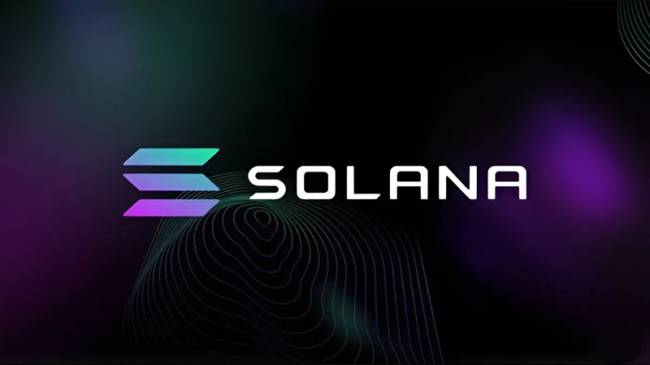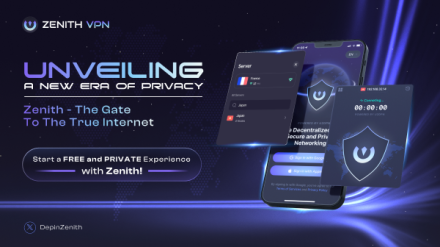Solana, with its outstanding processing speed and low transaction costs, has quickly become the ideal destination for potential DePIN projects. These projects not only bring benefits to users but also contribute to promoting the development of the Solana network. Let's explore the best DePIN projects on Solana in this article!
Table of Contents
What is Solana?
Introduced in 2017 by former Qualcomm executive Anatoly Yakovenko, Solana is an open-source blockchain platform designed to revolutionize scalability in the blockchain space. Boasting a theoretical throughput of over 65,000 TPS, Solana aims to outpace existing blockchains while maintaining affordability. Its hybrid model achieves this impressive performance without requiring additional scaling solutions.
Solana's architecture is particularly well-suited for developing smart contracts and Dapps. This versatility has made it popular for hosting DeFi platforms and NFT marketplaces. Following a successful initial coin offering (ICO) in 2017, Solana underwent several testnet phases before the main network officially launched in 2020. Since then, Solana has garnered significant attention in the blockchain space for its potential to address the scalability challenges that have hindered other blockchain platforms.

Key features of Solana:
- On-chain Program Development: Solana enables developers to build and deploy programs directly on the blockchain. Users can interact with these programs without intermediaries, fostering a decentralized application environment.
- 400ms Slot Times: Solana's target block time of 400 milliseconds ensures near-instantaneous transaction confirmations. This significantly enhances the user experience, making interactions feel seamless and responsive.
- Low Fees: Solana boasts remarkably low transaction fees, with a median cost of 0.00005 SOL per transaction. This affordability makes Solana accessible to a global audience, regardless of their financial background.
- High Throughput: Solana's architecture is designed to handle thousands of transactions per second. This scalability ensures that your applications can grow and adapt to meet increasing user demand without sacrificing performance.
How does Solana work?
Solana's efficient operation stems from its blend of proof of history (PoH) and proof of stake (PoS) consensus mechanisms. PoH, akin to a cryptographic clock, timestamps each transaction, creating a verifiable order of events. This chronological record, maintained by all nodes on the network, eliminates the need for nodes to wait for transaction verification from others, significantly boosting Solana's speed and throughput.
PoH works in tandem with PoS, where validators are chosen based on their stake in the network to secure the blockchain and validate transactions. The combination of PoH and PoS enables Solana to achieve fast block times and high throughput, making it a leading contender in the blockchain space.
Why does DePIN work best in Solana?
- Speed and efficiency: Solona's speed outperforms many other blockchain networks. Its parallel transaction processing capabilities allow it to handle thousands of TPS without congestion, making it ideal for high-volume dApps.
- Transaction finality: Notably fast, it takes only 0.4 seconds for confirmation. This rapid finality is crucial for applications like DePIN projects, gaming, and trading platforms that require quick transaction settlements.
- Hybrid model: This combines PoH and PoS. PoH, a unique timekeeping mechanism, timestamps transactions and creates a verifiable order of events, significantly speeding up the network. PoS, on the other hand, ensures the network's security and decentralization by selecting validators based on their stake.
This combination of PoH for speed and PoS for security and decentralization makes Solana a powerful platform for a wide range of applications, particularly those that demand high throughput and fast transaction finality.
The Best DePIN Projects on Solana
DePIN projects tend to be attracted to Solana because of the blockchain's high speed and low cost. Here are a few notable DePIN Projects on Solana:
Render Network (RNDR)
Render Network (RNDR) is a blockchain-based platform designed to democratize access to GPU computing power, a crucial resource for rendering digital content such as 3D models, animations, and special effects. It connects individuals and businesses who require powerful GPU capabilities with those who have excess GPU resources, creating a decentralized marketplace for rendering services.
For example, an artist working on a film's special effects, which demands substantial computing power, could utilize Render Network to access the idle GPUs of other network participants instead of investing in expensive hardware. Those contributing their GPU resources earn RNDR tokens as a reward.

Render Network experienced significant success in 2023, ranking among the top-performing DePIN Projects on Solana. This was attributed to a notable surge in render task requests, driven by advancements in photorealistic rendering and projection mapping projects, leading to the network's highest workload since its inception.
Render Network holds the position of the largest DePIN Projects on Solana, boasting a market capitalization exceeding $3.3 billion as of April 2024.
Helium (HNT)
Helium is a leading project in the DeWi sector within the broader DePIN industry. Its core products include:
- Helium IoT Network: This network utilizes LoRaWan nodes to connect Internet of Things (IoT) devices. Participants in the network operate Helium Hotspots, hardware devices that broadcast the network and enable owners to earn IOT tokens from network usage.
- Helium 5G: This network allows users with FreedomFi Gateways to participate as network nodes, broadcasting the network and earning MOBILE tokens from user activity.

Helium has garnered significant investment, raising $364.8M through 10 funding rounds since its inception in 2013. In April 2023, Helium transitioned to the Solana blockchain and subsequently introduced a $20M nationwide unlimited 5G mobile plan in the United States, later expanding coverage to Mexico.
Helium's network has a global presence, primarily concentrated in North America, Europe, and East Asia, with a total of 382.6K active IOT hotspots and 16.4K active MOBILE hotspots. The network experienced significant growth starting in December 2023, with over 5,000 new devices activated daily. As of May 2024, HNT boasts a market capitalization of $1B, establishing Helium as a leader among Wireless Network projects.
Hivemapper (HONEY)
Founded in 2015, Hivemapper developed a platform that enables map creation using data collected from tools such as drones and BlackVue dashcams. In November 2022, Hivemapper launched the Hivemapper Network and introduced the $HONEY token as an incentive mechanism.

Hivemapper's operational model allows users to contribute by capturing street-level imagery in their local areas, which is then processed by a team working with Hivemapper's AI mapping engine. This engine analyzes the images and transforms them into valuable insights that meet the demands of Hivemapper's customers.
Currently, the project has amassed data from over 1,920 regions globally, encompassing more than 112 million kilometers of roads, and mapped over 7.2 million kilometers of roads thanks to the efforts of approximately 38,500 contributors.
HONEY's value experienced a remarkable surge, increasing by roughly 20 times within a month from October to December 2023 and achieving a peak market capitalization of approximately $1.6 billion. In the first quarter of 2024, a significant amount of HONEY was unlocked, leading to a four-fold division of the token. However, despite this division, the market capitalization has maintained a level of $800 million.
Arweave (AR)
Arweave leads the Decentralized Storage Systems subgroup within the DePIN industry. Its mission is to connect surplus storage resources with users seeking data storage or information services.
In Arweave's model, the hosting service providers also act as contributing nodes (Miners) on the Arweave blockchain network. Users, who need to use Arweave's native token (AR) to pay for services, and rent storage from these Miners. Miners, in turn, receive AR as compensation for providing storage.
The AR token experienced substantial growth from Q4 2023 to Q1 2024, reaching a market capitalization of $2.7 billion in May 2024 with nearly 100% of its supply in circulation. Since October 2023, AR has increased more than tenfold in value.

Other outstanding projects:
io.net
io.net is a decentralized AI computing and cloud platform built on the Solana blockchain. It aggregates underutilized GPU resources, providing machine learning (ML) startups with access to scalable computing power at significantly lower costs compared to traditional cloud providers like Google, AWS, or Azure. io.net's product includes IO Cloud, IO Worker, IO Explorer, IO Marketplace, IO Developer Tools.
Nosana
Nosana is a DePIN project focused on developing data infrastructure on the Solana network. The platform aggregates computing power from underutilized data sources to serve AI developers.
Nosana operates with two key user groups: AI developers and GPU owners. Nosana offers a platform for GPU owners to rent out their excess GPU resources for passive income. AI developers pay a service fee to access GPU resources that fit their needs.
In conclusion, Solana is a fertile ground that attracts many DePIN projects. DePIN projects on Solana demonstrate the versatility and potential of Solana to foster a decentralized future where individuals have more control over their data and digital assets. Solana network along with the resonance from a vibrant ecosystem, are the decisive factors in the development of projects. If you'd like to explore more about the exciting world of decentralized infrastructure, including DePINs, be sure to visit the U2U Network for in-depth information and resources. Hopefully everyone has gotten useful information from this article.





.png)
